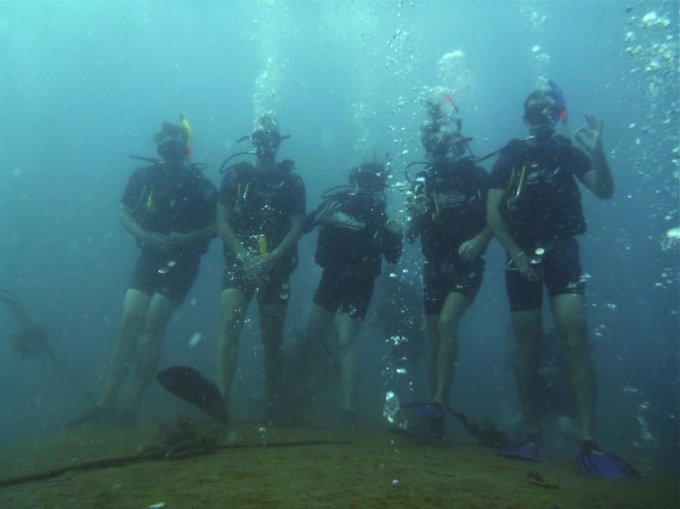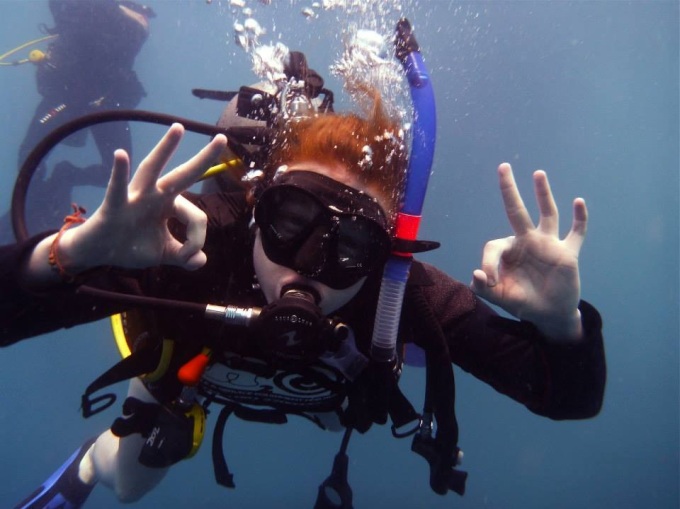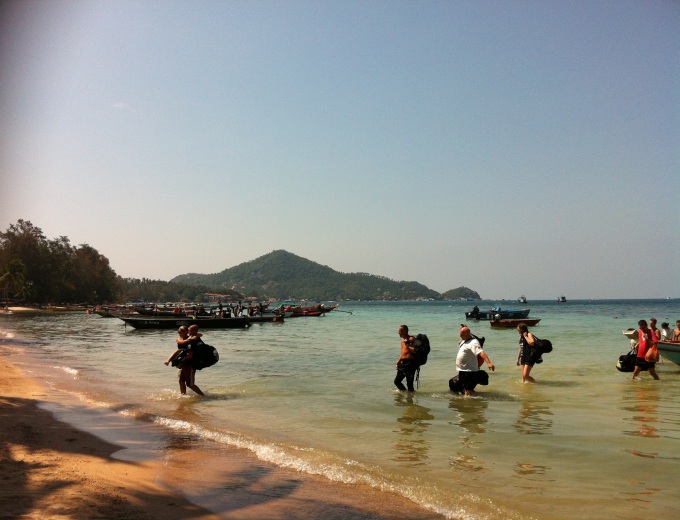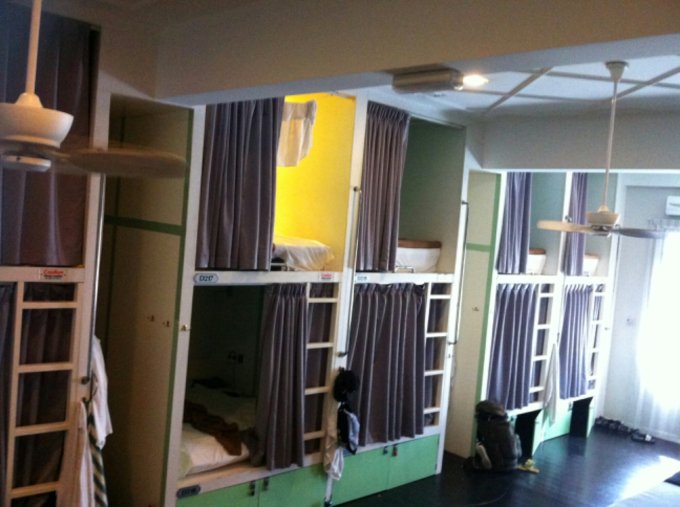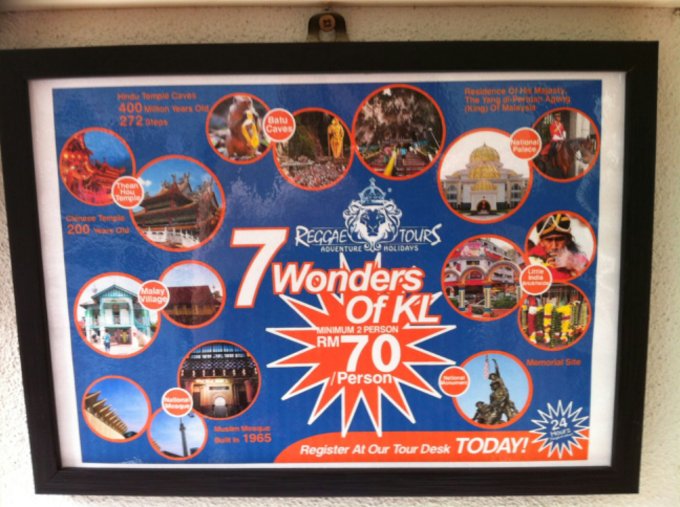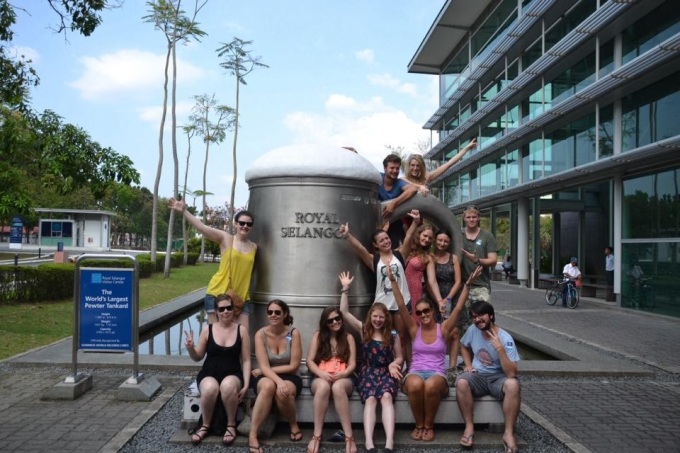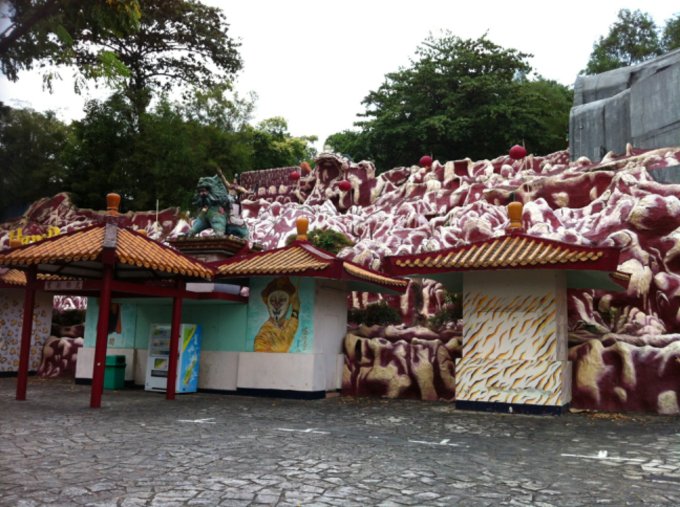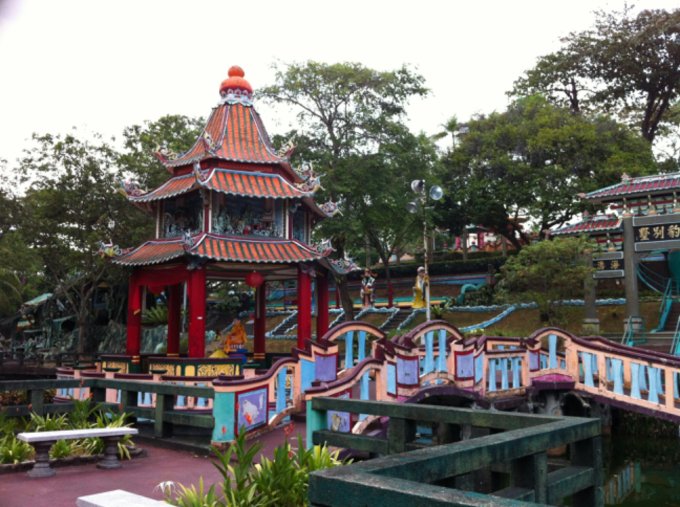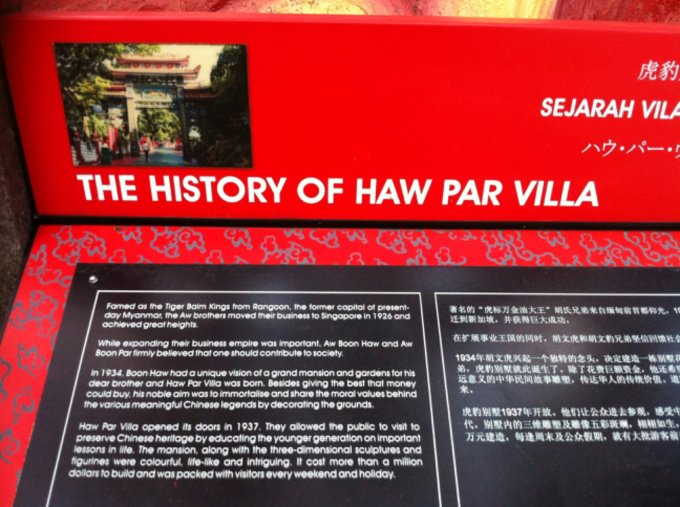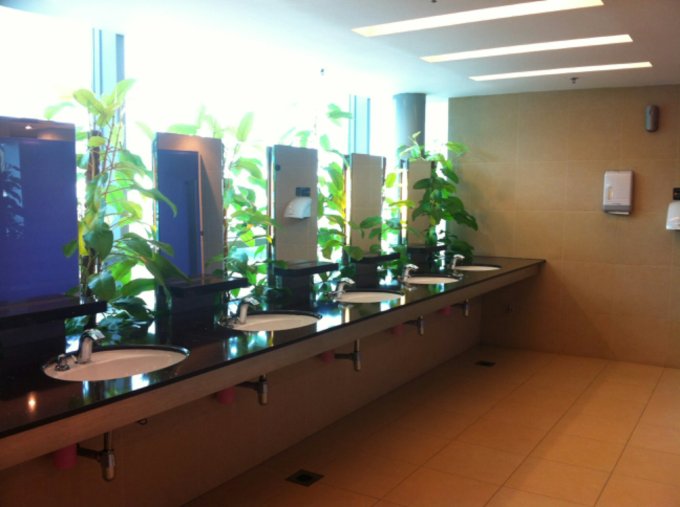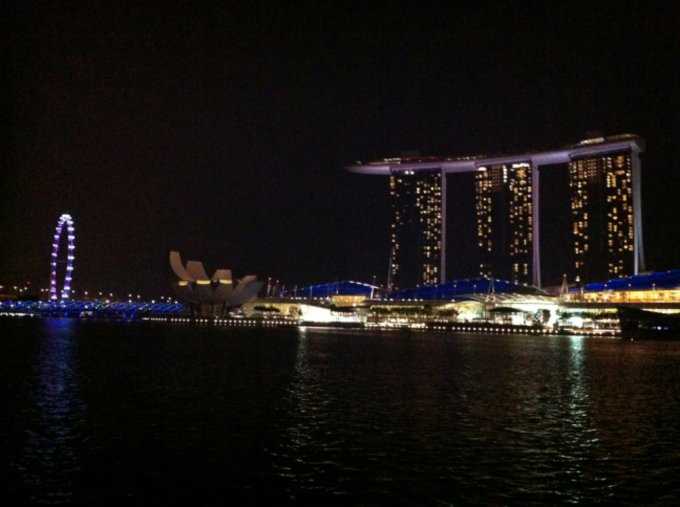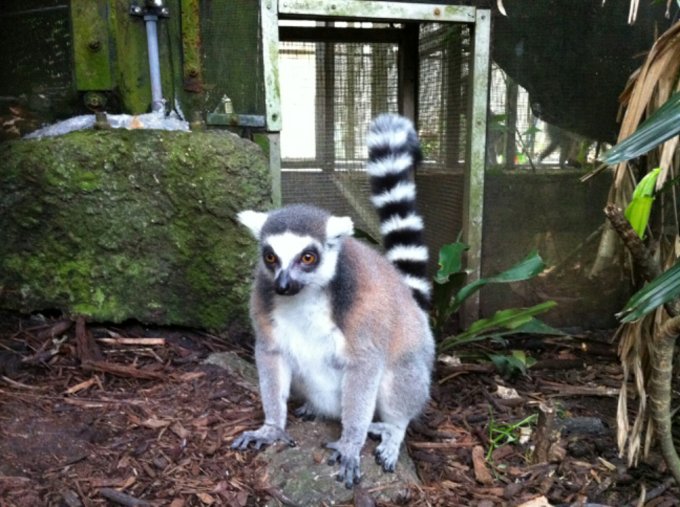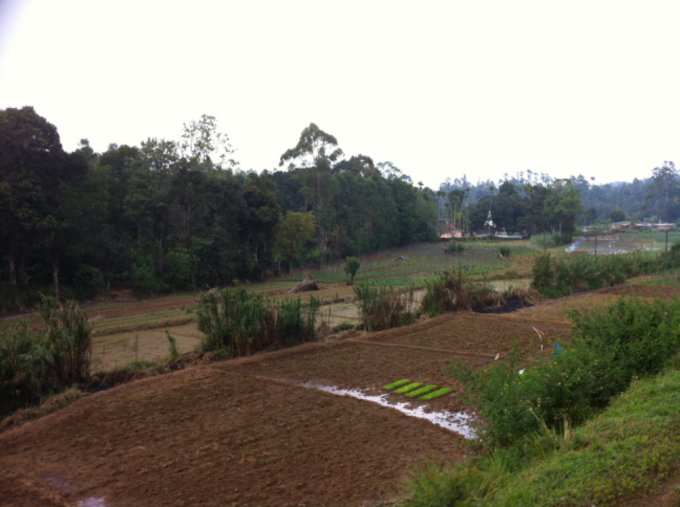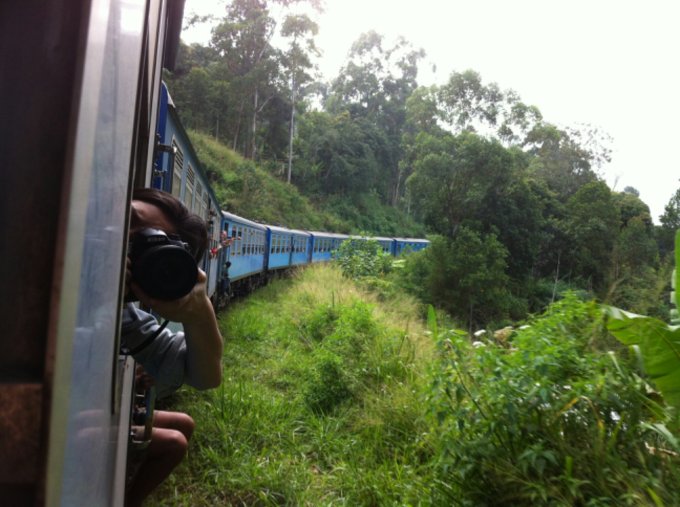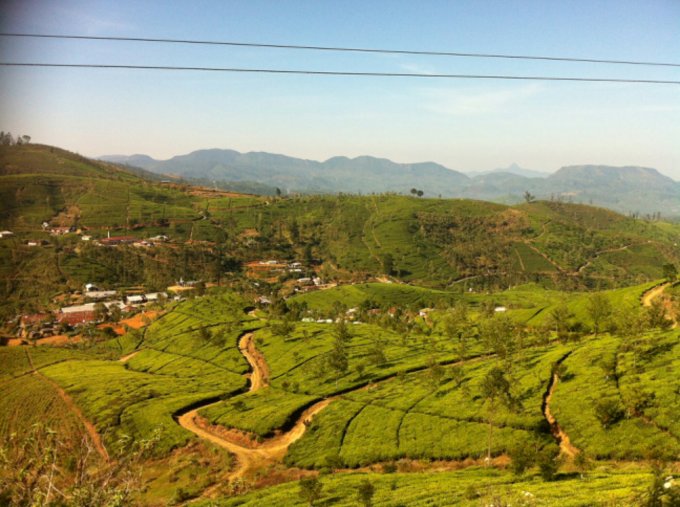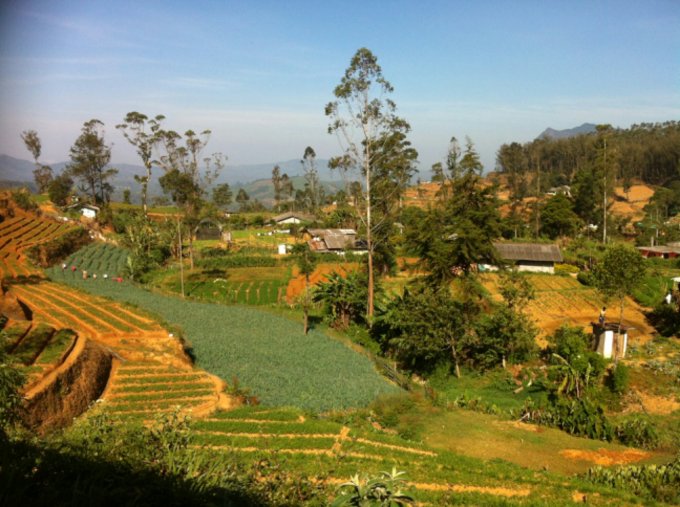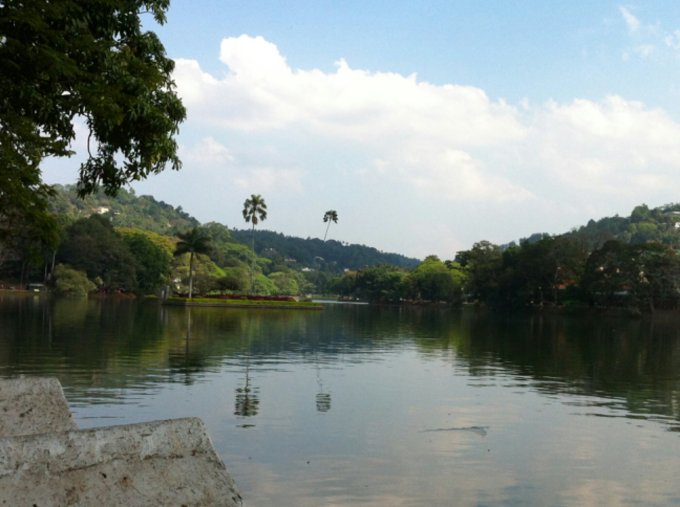Oh, hello blog, it’s been a while. Twenty-four to be exact. Since then I’ve been to Singapore, Kuala Lumpur and Thailand. So yes, I’m very behind. I do have some pretty good reasons though:
– Hours of overland travel
– A couple of nights of excessive alcohol (because 3 weeks without it was enough…)
– Learning to dive
– Being hooked on diving
Excuses, excuses, excuses.
So 2380km takes us back to Sri Lanka. I’m going to keep us hidden in the hill country for a little longer.
We got off the train at Hatton, and we were instantly badgered by Sri Lankan transport. “Where you going? Tuktuk? Taxitaxitaxi? I own this hotel, nice hot water and comfortable.” As per our usual, we started asking for the bus station. But of course, ‘no’ buses run to Delhouse, you have to take a tuktuk. So the bartering began. Somehow, we managed to get a ride for four hundred rupees. It probably should have cost us one thousand, perhaps more, but the driver did actually stop several times on the way to pick up various tuktuk essentials; a spare tyre, some fuel, some oil. Oh, we did get to see a lake on the way.
“You want pictures?” The driver was already getting out.
“Okay, what’s the lake called?” I asked.
“Sorry?”
“The lake. It’s name?”
“I’m sorry, I don’t understand.”
“Does it have a name? The lake?”
“Ohhhh. No. No name.”
And off we went, although not before having our photos with Mr Driver and his beloved tuktuk.
After a cold shower and an afternoon of chill time, we tucked ourselves into bed and slept until 3am. Some climbers had been awake for an hour already, but word of mouth informed us that it should only take roughly two hours to reach the summit. Plenty of time before sunrise.
On the way to the base, we stopped by the open stalls to stock up on water and bars of sugar. Energy energy energy. After being badgered into a too-early-to-care donation scam, we found the first step at 3:30am. This is where team Sam and Lauren split up. I can’t walk slow due to a knee condition, and Sam can’t walk fast due to asthma.
As I started to ascend, Sri Lankan men, women and children, were already coming down and finishing their pilgrimage. We often exchanged morning pleasantries, but as my breathing became more shallow and the words ‘good morning’ didn’t feel so good anymore, I plugged myself into my iPod and let Maroon 5’s rhythm carry me forward. It felt like I was running on the beach back home, but this was steps, and I didn’t have my wing-dog, Lenny.
The entire path leading to the summit was lit, so I could roughly judge how far I’d walked by studying the number of lights above and below me. I had a system where I would walk up blocks of steps without stopping, and then allow myself a couple of seconds respite at the top of each block. This worked perfectly. I was able to make progress while admiring the activity around me. I was struck by the number of elderly men and women making the pilgrimage, probably for the hundredth+ time in their life. Bare foot, frail, determined, they took it step by step, many women in their nineties were supporting each other, stopping with each other. Sometimes I’d pause my music, just to listen to their native language. It wouldn’t have surprised me if they were gossiping the whole way. Sri Lankan tea plantation workers are well known for their twitterings.
Besides the couple of seconds of breathing time, I did stop once. Big mistake. I knew as soon as I’d perched myself on a railing, I’d be stuck. I felt the muscles spasm in my legs and the cartilage in my knees started to burn. I’d probably walked up four thousand steps by that point. The top seemed so close, but the lights above me never seemed to reach the summit. I checked my iPod. 4:45am. Determined to make the sunrise, I swigged my water and took a bite of the sugar bar. I must have stopped for five minutes. Too much.
Although, it wasn’t soon before too long (see what I did there?) that I turned a corner and the steps became steeper. There was a set of railings on either side of the path, and one straight through the middle. I picked the right hand side and mimicked the pace of the person in front of me. Eventually, the trail of people ahead started to slow down due to a human traffic jam near the top. Sweating and wobbly, we all waited. I checked my watch. It had been one hour and thirty minutes ago that I’d conquered step one. There were about one hundred left and it took me fifteen minutes. I shouldn’t say I’m dissatisfied that I could have reached the summit quicker, but actually, I kind of am. Personal competition and all that.
Anyway, I edged around the temple that sat at the top of the peak, and joined the Western world that had been waiting around for a couple of hours. The early risers were shivering under blankets and jumpers. This would probably be the coldest place I’d visit in Sri Lanka. On went my own two hoodies and a pair of gloves (thank you, Mum, for making me pack winter-wear).
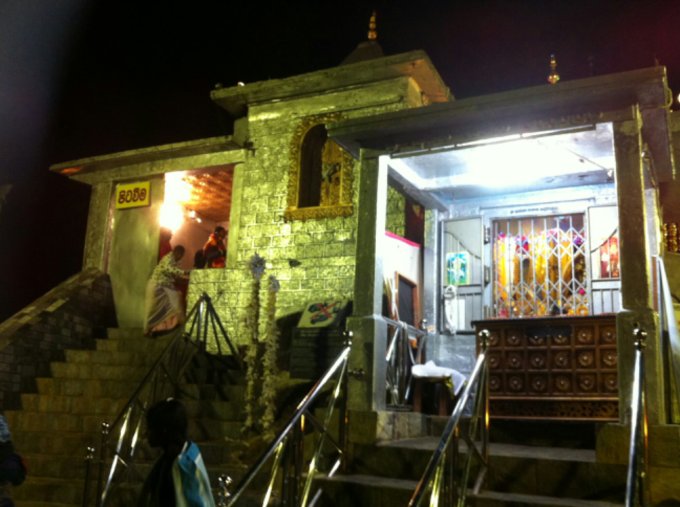
A quarter of an hour later, Sam joined me at the top; just in time for the sunrise. We watched the sky pinwheel through its colour chart of navys, blues, pinks, reds and yellows. As it rose, the mountains below started to come into focus, triangular shadows pointing to the sky.
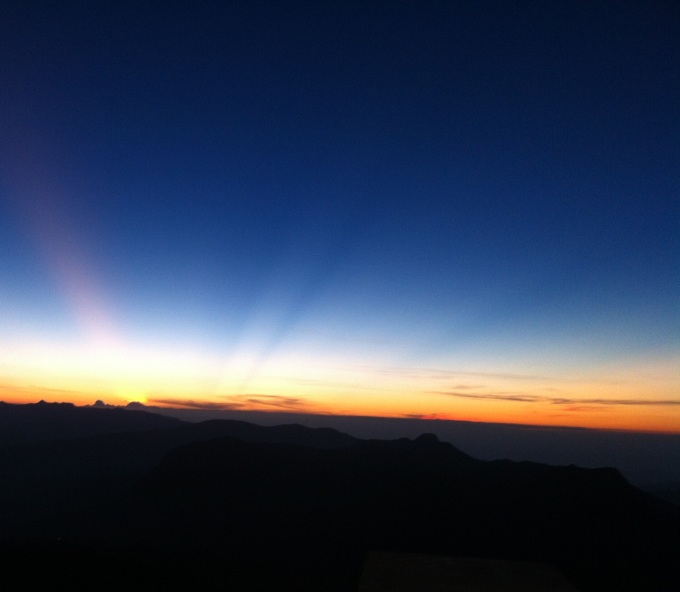
If I’m honest, that was pretty much it. Although beautiful, the urge to see the sunrise was quickly replaced by an urge for descent.
I won’t bore you with the details of going down, but I will let you know that it hurt. A couple of times I had to move aside for people to be stretchered down the mountain.
But I made it. Tired, sticky and shaking, ready for a shower and some breakfast.
At the bottom, I turned around and looked up, towards the peak, where we’d left people in peace, praying after their long pilgrimage.
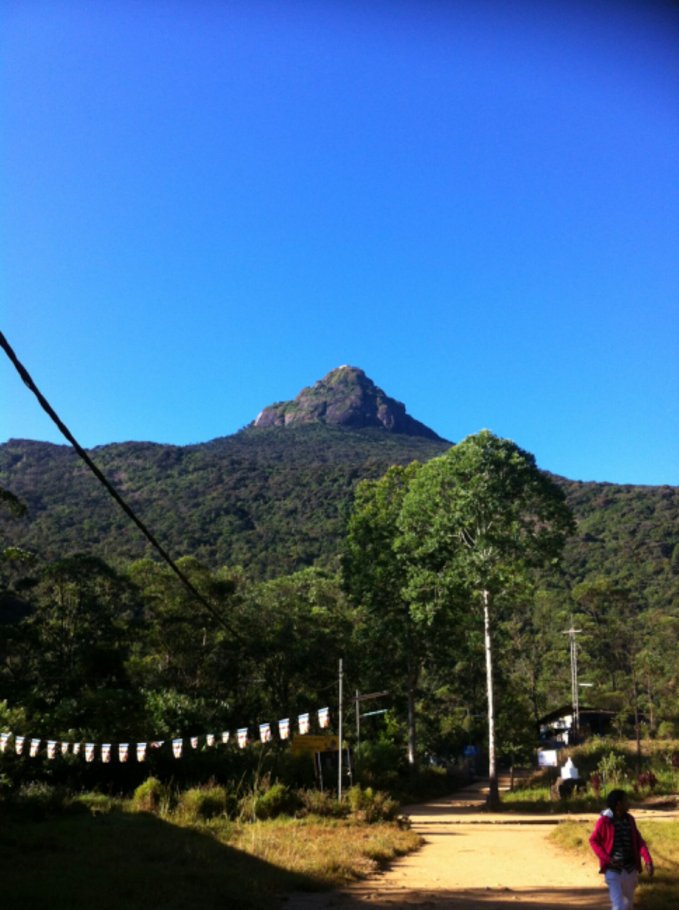
They’d be there for a couple of hours, eating, drinking, praying, socialising. This was their way of life, and they’d let us in. Grateful, I turned around and dragged myself back to the hostel.
As I tucked into my toast and runny jam, I thought about how I would climb Adam’s Peak again if I was ever in the area. It’s definitely cheaper than a gym membership.
